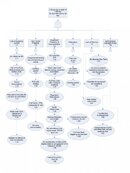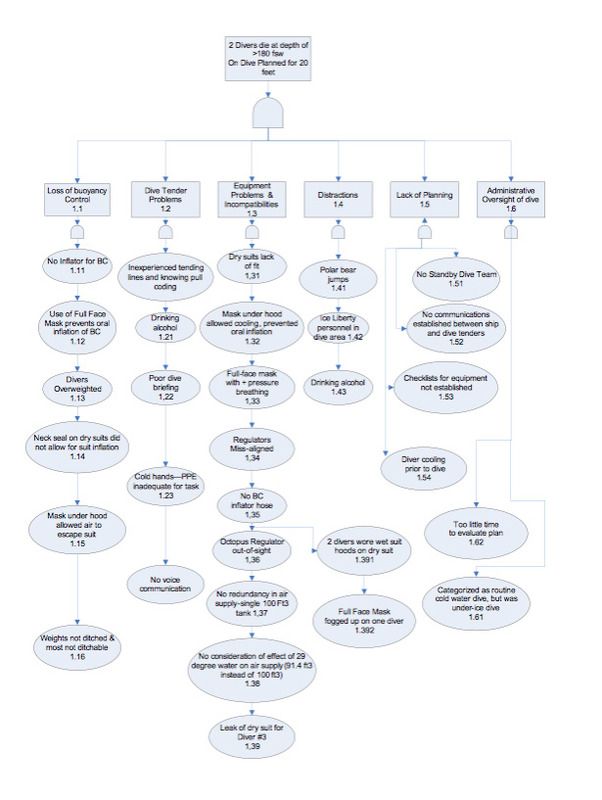There are almost always more contributing factors that feed into the one, top event. That top event may be drowning, for instance. In 2007 I conducted an analysis of a prominent diving accident, and produced what I called a "Hazard Logic Tree Analysis of this Accident." Actually, from a Professional Safety point of view, it was a Fault Tree Analysis, but with the word "fault" in the title, it turns some people off. We in the safety profession use this Fault Tree Analysis to analyze faults in systems, be they human or mechanical. Normally, there is a top event, but there are always events that feed into this top event. The top event could be drowning, or decompression sickness, or suffering an injury, or a piece of equipment failing.
For instance, I had a situation where I dived with a fairly new Dacor regulator, and when I inhaled I got mostly water. After trying about three breaths, I switched to my alternate regulator (another Dacor second stage on an octopus) and completed the dive on that second stage. But when I looked at the regulator after the dive, I found that the diaphragm had become loose from the cover, and allowed water into the second stage, lots of water too.
In this photo below, I have identified six contributing factors to this fatal dive for two divers. Under each contributing factor, I listed each secondary factor that could have contributed to this accident. By identifying each contributing and secondary factor, I could then design interventions which would prevent that factor. Prevent all the factors, and you prevent the top event. But don't be caught up in what this thread is about, which is the "Number One Cause." There are always more factors contributing to that then the top event, and those are the ones we concentrate on in professional safety.
SeaRat
John C. Ratliff, CSP, CIH, MSPH
(CSP = Certified Safety Professional; CIH = Certified Industrial Hygienist)
For instance, I had a situation where I dived with a fairly new Dacor regulator, and when I inhaled I got mostly water. After trying about three breaths, I switched to my alternate regulator (another Dacor second stage on an octopus) and completed the dive on that second stage. But when I looked at the regulator after the dive, I found that the diaphragm had become loose from the cover, and allowed water into the second stage, lots of water too.
In this photo below, I have identified six contributing factors to this fatal dive for two divers. Under each contributing factor, I listed each secondary factor that could have contributed to this accident. By identifying each contributing and secondary factor, I could then design interventions which would prevent that factor. Prevent all the factors, and you prevent the top event. But don't be caught up in what this thread is about, which is the "Number One Cause." There are always more factors contributing to that then the top event, and those are the ones we concentrate on in professional safety.
SeaRat
John C. Ratliff, CSP, CIH, MSPH
(CSP = Certified Safety Professional; CIH = Certified Industrial Hygienist)






